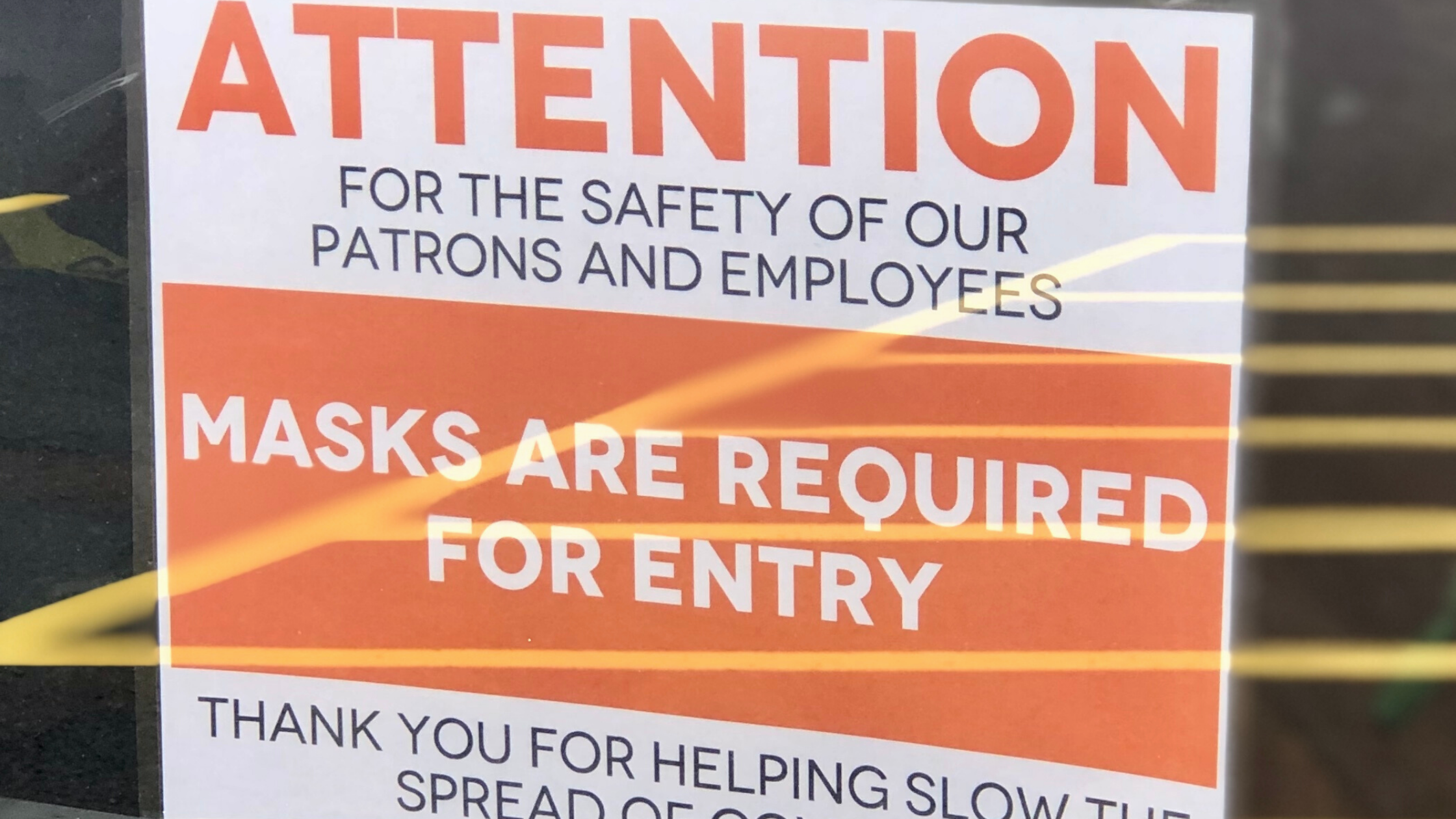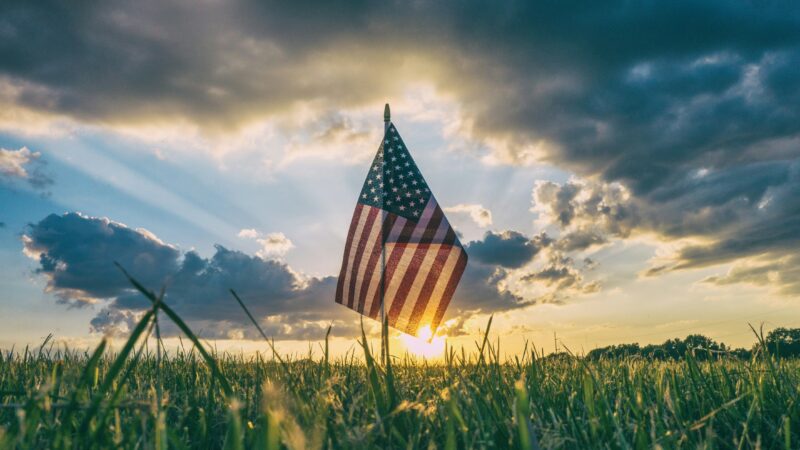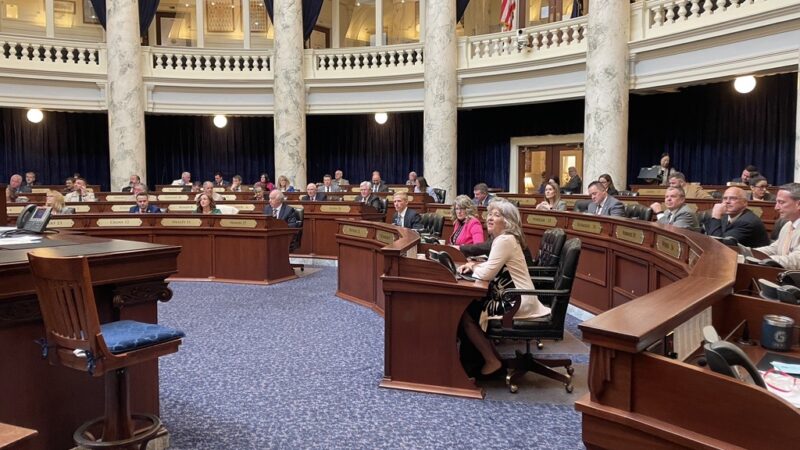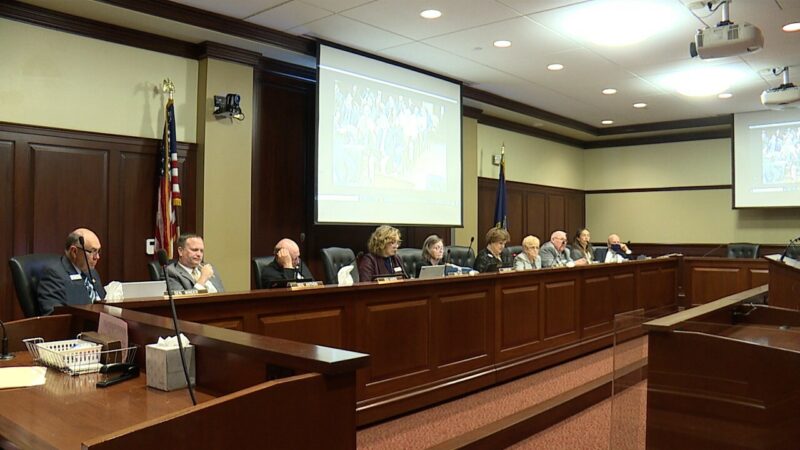Mask Mandates: Medical Intervention on Healthy People

The evidence for masks (as explained below) cited by health authorities (supposedly our nation’s “experts”) is inadequate and does not justify forcing what could be considered a medical intervention on millions of healthy people. In even considering a sweeping mandate the burden of proof is on health and government officials to provide sufficient and conclusive (not anecdotal) evidence, beyond a reasonable doubt, that there are NO negative health effects (physical, mental, or emotional) associated with the implementation of mask policies. Please review all the citations given on the governor’s website from the CDC and Idaho Health & Welfare (https://coronavirus.idaho.gov/idaho-resources/) used to justify face coverings? Here is our summary.
CDC Citations –
- The CDC provides a list of 19 citations. Citations 1-12 only discuss asymptomatic transmission and are not actually mask studies.
- Citations 13 – 15 are the only studies that address cloth masks (see below). If the government is not going to provide a constant supply of surgical masks to the entire population, most people will opt for cloth masks due to affordability and availability. CDC encourages the general public to use cloth/home-made masks to preserve the surgical mask supply for healthcare workers. These 3 studies show some potential benefit to masks, but efficacy depends on proper use and fit (no gaps), the number of layers and type of fabric, and other measures used to reduce infection. A mandate will not be able to control these factors. Study #14 shows that filter efficiency was significantly reduced by gaps – this problem alone makes universal masking unrealistic and unsupported as a mandate. The general public is not fit-tested or trained on mask-wearing, they do not seal or tape masks to their skin, and do not live in a clinically controlled environment. Many of the materials in these studies were sealed around a tube, not tested on real people. Look around – you will rarely see a lay-person with a mask that does not have any gaps (not to mention those people who pull their mask down to sneeze!).
- Citations 16 – 19 only address surgical mask material with no gaps, or a patient was instructed on proper use. It should be noted that not all viral RNA droplets/aerosols actually contained virus, and infectivity was not confirmed.
Citation 13 (author Davies): “…the homemade mask did not significantly reduce the number of particles emitted… In contrast, the surgical mask did have a significant effect.” “Although any material may provide a physical barrier to an infection, if as a mask it does not fit well around the nose and mouth, or the material freely allows infectious aerosols to pass through it, then it will be of no benefit.” “An improvised face mask should be viewed as the last possible alternative if a supply of commercial face masks is not available, irrespective of the disease against which it may be required for protection. Improvised homemade face masks may be used to help protect those who could potentially, for example, be at occupational risk from close or frequent contact with symptomatic patients. However, these masks would provide the wearers little protection from microorganisms from other persons who are infected with respiratory diseases. As a result, we would not recommend the use of homemade face masks as a method of reducing transmission of infection from aerosols.”
Citation 14 (author Konda): This is the only study that tested mask materials with and without gaps. Surgical masks and multi-layered fabrics had some filter efficiency, however, “Whereas the surgical mask provides moderate (>60%) and excellent (close to 100%) particle exclusion below and above 300 nm, respectively, the tests carried out with the 1% opening surprisingly resulted in significant drops in the mask efficiencies across the entire size range (60% drop in the >300 nm range).” For example, the 1 layer 80 TPI quilter’s cotton (which is stated as often used in DIY masks) as shown on Table 1 only has a 9% filter efficiency, even without a gap. A surgical mask with any gap only has a 50% filter efficiency. “Our findings indicate that leakages around the mask area can degrade efficiencies by ∼50% or more, pointing out the importance of “fit”. “It is critically important that cloth mask designs also take into account the quality of this “fit” to minimize leakage of air between the mask and the contours of the face, while still allowing the exhaled air to be vented effectively.”
Citation 15 (author Aydin): This study showed some benefit to cloth masks (1-layer T-shirt had a 43.3% blocking efficiency) but tested only droplet dissemination (not aerosolized particles), and only tested the materials without any gaps.
Idaho Department of H&W Citations –
- Reference numbers 3 – 7 and 9 are duplicate citations from the CDC list. Reference #8 is the CDC article that provides the link to their mask references. Reference #10 is a short article with no mask information.
- Reference #1 is an article written by doctors that actually questions the benefits of masks and has no mask data. “We know that wearing a mask outside health care facilities offers little, if any, protection from infection…. Public health authorities define a significant exposure to Covid-19 as face-to-face contact within 6 feet with a patient with symptomatic Covid-19 that is sustained for at least a few minutes (and some say more than 10 minutes or even 30 minutes). The chance of catching Covid-19 from a passing interaction in a public space is therefore minimal. In many cases, the desire for widespread masking is a reflexive reaction to anxiety over the pandemic.” “What is clear, however, is that universal masking alone is not a panacea. A mask will not protect providers caring for a patient with active Covid-19 if it’s not accompanied by meticulous hand hygiene, eye protection, gloves, and a gown. A mask alone will not prevent health care workers with early Covid-19 from contaminating their hands and spreading the virus to patients and colleagues. Focusing on universal masking alone may, paradoxically, lead to more transmission of Covid-19 if it diverts attention from implementing more fundamental infection control measures.” “One might argue that fear and anxiety are better countered with data and education than with a marginally beneficial mask, particularly in light of the worldwide mask shortage, but it is difficult to get clinicians to hear this message in the heat of the current crisis.”
- Reference #2 concluded that “Results obtained in the study show that common fabric materials may provide marginal protection against nanoparticles including those in the size ranges of virus-containing particles in exhaled breath.” “…fabric materials show only marginal filtration performance against virus-size particles when sealed around the edges. Face seal leakage will further decrease the respiratory protection offered by fabric materials.” This study did not measure face seal leakage.
Other studies and citations questioning masks:
“We do not recommend requiring the general public who do not have symptoms of COVID-19-like illness to routinely wear cloth or surgical masks because: There is no scientific evidence they are effective in reducing the risk of SARS-CoV-2 transmission… Sweeping mask recommendations—as many have proposed—will not reduce SARS-CoV-2 transmission, as evidenced by the widespread practice of wearing such masks in Hubei province, China, before and during its mass COVID-19 transmission experience earlier this year. Our review of relevant studies indicates that cloth masks will be ineffective at preventing SARS-CoV-2 transmission, whether worn as source control or as PPE.” “In sum, given the paucity of information about their performance as source control in real-world settings, along with the extremely low efficiency of cloth masks as filters and their poor fit, there is no evidence to support their use by the public or healthcare workers to control the emission of particles from the wearer.” COMMENTARY: Masks-for-all for COVID-19 not based on sound data, https://www.cidrap.umn.edu/news-perspective/2020/04/commentary-masks-all-covid-19-not-based-sound-data
“Laboratory tests showed the penetration of particles through the cloth masks to be very high (97%) compared with the medical masks (44%).” “We have provided the first clinical efficacy data of cloth masks, which suggest HCWs should not use cloth masks as protection against respiratory infection. Cloth masks resulted in significantly higher rates of infection than medical masks, and also performed worse than the control arm”. “A cluster randomized trial of cloth masks compared with medical masks in healthcare workers”, https://bmjopen.bmj.com/content/bmjopen/5/4/e006577.full.pdf
“While there is some experimental evidence that masks should be able to reduce infectiousness under controlled conditions [7], there is less evidence on whether this translates to effectiveness in natural settings. There is little evidence to support the effectiveness of face masks to reduce the risk of infection. Cowling, B. et al. (2010) “Face masks to prevent transmission of influenza virus: A systematic review“, Epidemiology and Infection, 138(4), 449456. doi:10.1017/S0950268809991658 https://www.cambridge.org/core/journals/epidemiology-and-infection/article/face e-masks-to-prevent-transmission-of-influenza-virus-a-systematicreview/64D368496EBDE0AFCC6639CCC9D8BC05
“None of the studies established a conclusive relationship between mask/respirator use and protection against influenza infection. Some evidence suggests that mask use is best undertaken as part of a package of personal protection especially hand hygiene.” (bin-Reza F et al. The use of mask and respirators to prevent transmission of influenza: A systematic review of the scientific evidence. Resp Viruses 2012;6(4):257-67. https://www.ncbi.nlm.nih.gov/pmc/articles/PMC5779801/)
“….homemade masks are not considered PPE, since their capability to protect HCP is unknown. Caution should be exercised when considering this option. Homemade masks should ideally be used in combination with a face shield that covers the entire front (that extends to the chin or below) and sides of the face.” https://www.cdc.gov/coronavirus/2019-ncov/hcp/ppe-strategy/face-masks.html
Potential health risks voiced by doctors and other professionals:
- Possible increased risk of infection (inhaling trapped virus, bacteria, and other toxins you would normally be exhaling?): “The rates of all infection outcomes were highest in the cloth mask arm, with the rate of ILI (influenza-like illness) significantly higher in the cloth mask arm compared with the medical mask arm.” (the cloth masks were 2-layer cotton) “Adverse events associated with facemask use were reported in 40.4% of HCWs in the medical mask arm and 42.6% in the cloth mask arm. General discomfort and breathing problems were the most frequently reported adverse events.” “The physical properties of a cloth mask, reuse, the frequency and effectiveness of cleaning, and increased moisture retention, may potentially increase the infection risk for HCWs. The virus may survive on the surface of the facemasks, and modelling studies have quantified the contamination levels of masks. Self-contamination through repeated use and improper doffing is possible….Observations during SARS suggested double-masking and other practices increased the risk of infection because of moisture, liquid diffusion and pathogen retention. These effects may be associated with cloth masks.”
“A cluster randomized trial of cloth masks compared with medical masks in healthcare workers”, https://bmjopen.bmj.com/content/bmjopen/5/4/e006577.full.pdf
- Hypoxia and immune system impairment (hypoxia can cause heart attacks, strokes, seizures, death and more. Low oxygen levels stress the body resulting in increased cortisol. Cortisol suppresses the immune system rendering people MORE susceptible to illness).
Shehade H et al. Cutting edge: Hypoxia-Inducible Factor-1 negatively regulates Th1 function. J Immunol 2015;195:1372-1376.
Westendorf AM et al. Hypoxia enhances immunosuppression by inhibiting CD4+ effector T cell function and promoting Treg activity. Cell Physiol Biochem 2017;41:1271-84.
Sceneay J et al. Hypoxia-driven immunosuppression contributes to the pre-metastatic niche. Oncoimmunology 2013;2:1 e22355. - Increase of CO2 and immune system impairment
https://www.nature.com/articles/s41598-018-32008-x.pdf
Have you considered these questions/potential problems should you implement a mask mandate?
- What about people who cannot breathe well in the masks, including those who do not have a respiratory medical condition (i.e. anxiety symptoms caused by oxygen deprivation)? Would they require a “doctor’s note”? How would you regulate this? Businesses (i.e. grocery stores) in California are refusing service to un-masked patrons even if they have a doctor’s note. Is this illegal discrimination? Does this violate HIPPA regulations?
- Will you be providing a mask supply to businesses? (many of which are already struggling financially). What about the stress caused to employees who must face potential violence from angry citizens who disagree with a mask mandate? Can police services handle these extra calls and are you willing to place this burden on law enforcement agencies? Are you prepared to fine or jail citizens and businesses, already stressed and financially burdened by consequences of the lockdown? Is a universal mask mandate based on flimsy scientific evidence worth the trouble that it may cause? Could it exacerbate the economic depression?
- What about potential infection via the eyes? Lack of eye protection eliminates any benefit a mask would provide.
- Please recall that as of just recently the CDC, WHO, and US Surgeon General did NOT recommend masks for the general public (healthy people) outside of healthcare facilities.
In addition, the American Medical Association states that “Face masks should be used only by individuals who have symptoms of respiratory infection such as coughing, sneezing, or, in some cases, fever. Face masks should also be worn by health care workers, by individuals who are taking care of or are in close contact with people who have respiratory infections, or otherwise as directed by a doctor. Face masks should not be worn by healthy individuals to protect themselves from acquiring respiratory infection because there is no evidence to suggest that face masks worn by healthy individuals are effective in preventing people from becoming ill. Face masks should be reserved for those who need them because masks can be in short supply during periods of widespread respiratory infection. Because N95 respirators require special fit testing, they are not recommended for use by the general public.” https://jamanetwork.com/journals/jama/fullarticle/2762694
- Have you found studies that measure the long-term health risks of masks for both adults and children? Could the intervention be worse than the illness itself? Is it legal and ethical to mandate an intervention for children that could potentially affect their health, where the child’s parents or legal guardians alone have the right to make these decisions for them?
- Could you consider a less intrusive mandate based on more on conclusive scientific evidence, i.e. face mask mandate in public only for those who are sick/vulnerable, or requiring hand sanitizing at business entrances.
We agree with common sense science-based measures encouraged for any type of viral illness i.e. handwashing and staying home when sick, but it seems much of the nation is reacting based on hysteria, emotion, and fear. For this virus, the focus should not be on the number of cases sensationalized in the media (since many people are asymptomatic and most recover without medical intervention, there are problems with testing i.e. false positives, and there is evidence of data fraud) but on COVID-caused hospitalization and death rates.
The world population has been living with several types of coronaviruses (and millions of other kinds of viruses and bacteria) for decades, and current science is still making discoveries about the complex and amazing nature of our God-given immune system. Our society will adjust to this new virus as the population achieves natural herd immunity.
We are certainly not going to support authoritarian rule and the destruction of the economy, community, and our personal freedoms, based on a current 0.26% CDC estimated COVID mortality rate. Mandating face masks and lockdowns (never enacted before in recent history for any other virus) is an over-reaction unwarranted for this virus. Illness is part of life. Instead of fear-based reactions, public health efforts should focus on protecting vulnerable populations (i.e. nursing homes) and educating medical practitioners and the general public on COVID treatment remedies and how to strengthen and support the immune system.







